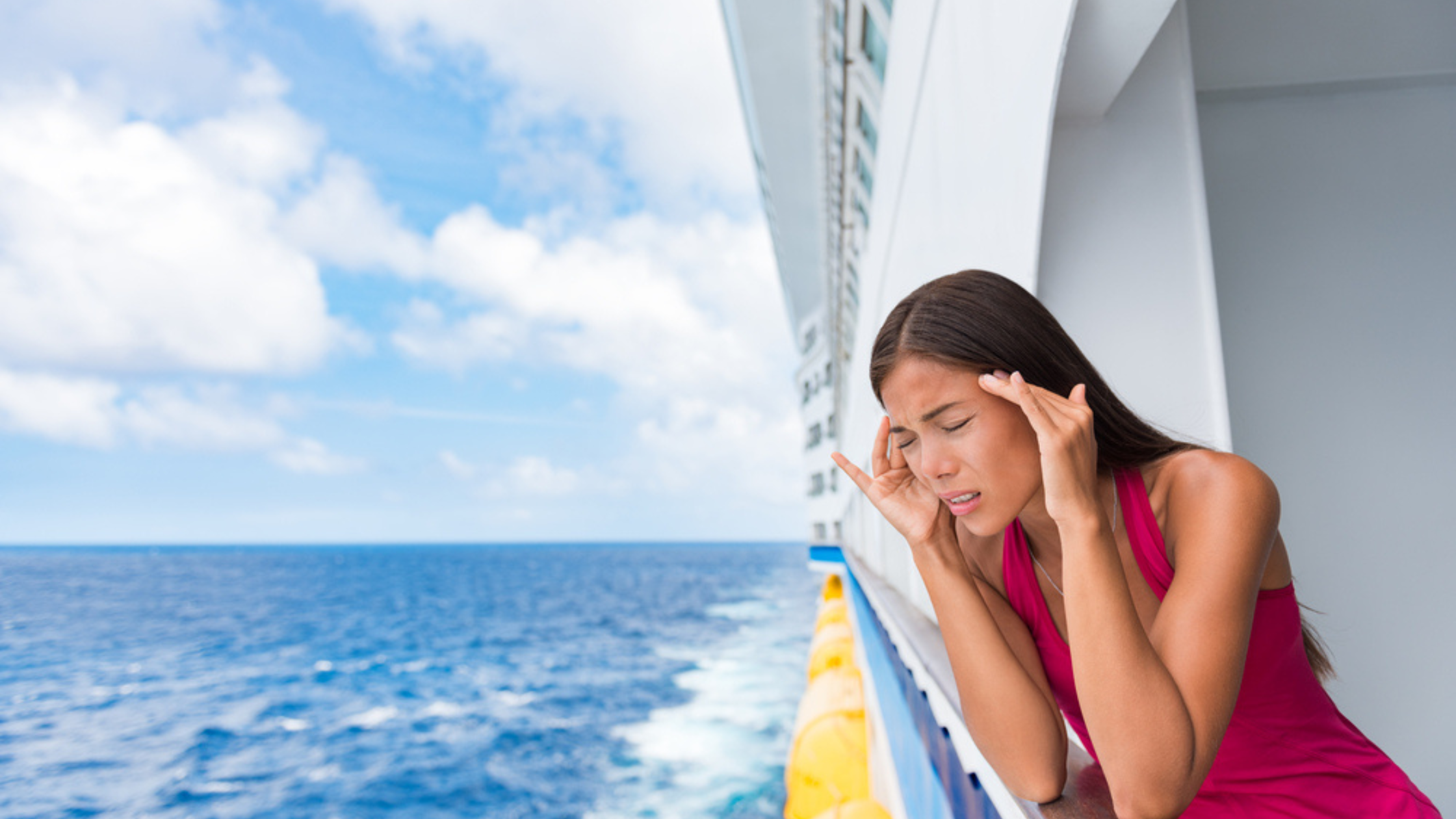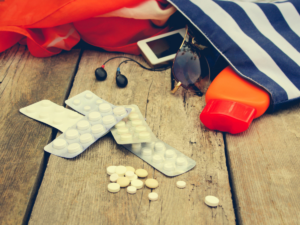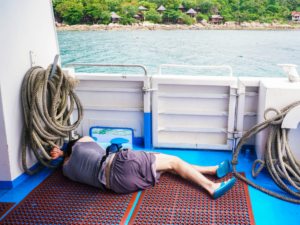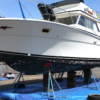
Seasickness – it’s possibly the number one reason why people shy away from boating. This unpleasant condition is basically motion sickness stemming from mixed signals sent to the brain by the eyes, ears, and body muscles. Mild seasickness can be disorienting and may cause dizziness or nausea, but the more extreme version includes muscle weakness and vomiting and can be dangerous as the body dehydrates and blood pressure drops.
Motion causing an imbalance of the inner ear may be the root cause of seasickness but there are other contributing factors. Excessive heat, odors such as engine exhaust or cooking fumes, fatigue, and being too hot or too cold can all affect even those who are normally not susceptible.
The best ways tackle seasickness include prevention, medication and determination. They all take advance preparation, but they do work. Let’s break it down.
Prevention

Rejecting an alcoholic beverage | Brian A Jackson on Shutterstock
There are things you can do to minimize being affected by mal de mer even before you set foot on the dock.
1. Food, Drink and Tobacco
Avoid alcohol and certain foods about two days before heading out. Spicy, acidic and rich foods have a way of coming back to say hello when the body is in distress. For some people, cookies or candies that contain ginger help. Drink lots of water and avoid alcohol and smoking.
2. Arrive Rested
Fatigue can be the result of seasickness but it can also be a cause. Come refreshed or be prepared to sleep while aboard. If you’ve been ill recently and still are congested, this too may contribute since the ears are already impacted so decide if you’re up for a day of boating or postpone it.
3. Dress for Success
Dress in layers so you can regulate your core temperature throughout the day. Being too hot or cold will contribute to feeling poorly. If rain is expected, pack dry gear, and if you’ll be lightly clad because it’s too hot, bring sunscreen because being seasick and sunburned is a double bummer.
Medication & Treatment
Many people find relief with seasickness medication most of which can be purchased without a prescription.

Seasickness Prevention Pill | Victoria 1 on Shutterstock
4. Oral Medication
Many effective oral medications are over-the-counter and are relatively inexpensive. Dramamine is a standby but may cause drowsiness. Bonine offers a less drowsy formula. Take the meds the night before boarding. They will provide a good night’s sleep and will be well into your system when you need them. Taking medication after seasickness has set in is rarely successful.
5. Transdermal Medication
Another way to put medication into your system is with scopolamine patches that don’t require taking a pill. They’re placed on the neck behind an ear and are replaced every four days. Alternate sides for extended use. Side effects may include skin irritation below the patch and dry mouth, but patches may provide relief once seasickness is taking hold and when you can’t hold anything like a pill down.
6. Acupressure
If you’d rather skip the drugs or if you’re ultra-susceptible to sleep inducing medications, try acupressure in the form of a wristband. The band produces pressure on the inside of your wrist to alleviate symptoms. The bands are available in most drug stores without a prescription and are affordable, but they don’t work for everyone.
Determination
Part of seasickness management is the determination to place mind-over-circumstance. If you expect to feel or fear feeling sick, you’ll probably compound the problem. There are things you can do help you focus on feeling well.
7. Use your Eyes
Focus on a distant point, preferably on the level horizon. Put down the magazine, book or phone and look out of the boat.
8. Use your Breath
Slow, deliberate breathing has a calming affect so not only will it ease anxiety, it’ll calm your stomach. Inhale through the nose and exhale through the mouth in long, slow breaths. Stay away from funky odors like fuel fumes at the back of the boat or in the galley where food is being prepared.

Man having seasickness | TaraPatta on Shutterstock
9. Choose your Location and Orientation
Find the part of the boat that is moving the least which will mean the middle and away from the ends that are more jostled. Also, stay low but still outside on deck. Skip going up to the flybridge or tuna tower where motion is exaggerated but don’t go down to the enclosed head either. If you’re up for it, take the wheel and train your brain by giving it something to do. Lay down if you need to. A horizontal orientation helps calm the calamity of messages coming to the brain.
10. Check in with Yourself and Others
Seasickness can be dangerous in its advanced stages. You may be too weak to hold on securely or you may become dehydrated. Stay on deck, and tell others that you’re unwell so they can help. Sometimes quieter boaters are those who are feeling the worst but are embarrassed to say so. Finally, don’t assume that if you haven’t been seasick before that you’re immune. Changing conditions and circumstances can affect even the saltiest of sailors.
Get out There
There are lots of things you can do to avoid or at least manage feeling green at the gills so don’t let it stop you from enjoying boating altogether.








